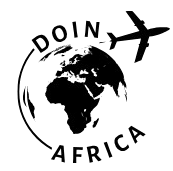How to Launch a Remote Digital Marketing Agency for Small Businesses in Namibia
Let me paint you a scene—it’s late in the Namibian summer, the dust from the highlands drifts through town, and you’re sitting under a slow-turning ceiling fan, Wi-Fi flickering, considering your next entrepreneurial move. Maybe you’ve noticed that Namibian small businesses—retailers, lodges, B&Bs, tour operators, local brands—aren’t visible online, or their social media is…well, nearly non-existent. Here’s the honest truth: for many Namibian entrepreneurs and SMEs, traditional marketing is simply no longer enough. Namibian consumers (and, crucially, tourists) are searching on Google, checking out Instagram, reading Facebook reviews. Your nation’s SMEs need to meet them where they are—or get left behind.1
But how do you actually launch a remote digital marketing agency—from scratch, for Namibian small businesses—without a safety net, a swanky office, or a trust fund? I’ve helped several teams wrestle with this very issue, in fact, I’ve made my fair share of mistakes (some embarrassing, all instructive). This won’t be a pseudo-American get-rich-quick thread. It’ll be the unvarnished, hopeful, practical blueprint for making agency life work remotely in Namibia right now. Because in 2025, digital savvy isn’t just an asset, it’s a necessity.
Understanding the Digital Marketing Landscape in Namibia
First, let’s kill the myth that “Africa is offline.” Namibia, for all its sweeping deserts and low population density, is already home to over 1.8 million internet users as of 2024. According to the Communications Regulatory Authority of Namibia (CRAN), internet penetration is at approximately 74% and growing yearly, with most users accessing via mobile.2 That means rural farmers, Windhoek professionals, and Swakopmund lodge managers are increasingly online—just often on low-bandwidth networks, irregularly, and with basic smartphones.
Namibia is the first African country to introduce a nationwide digital ID system for secure e-Government interactions, making remote business and compliance easier for digital entrepreneurs and SMEs alike. Tech-driven, but accessible—even in small towns.3
What struck me, coming from “big agency” environments, was just how greenfield Namibia’s digital sector remains. Most small businesses are still in the experimental stage—they want results, but they’re learning what “digital” can even deliver. That means huge opportunity, but the risk of overpromising is real.
The upshot? Launching a digital marketing agency in Namibia is less about following a Silicon Valley template and more about **local adaptation**. Take it from me—simplified, cost-efficient tactics (think WhatsApp business, optimized Google My Business listings, mobile-optimized websites) often outperform flashier but irrelevant “solutions.” Anyone selling you only what worked in large European or US cities hasn’t spent time on the ground here.
“Digital transformation in Africa is not just a matter of technology, but of localized problem-solving—meeting people where they truly are.”
And yet—even in 2025, many Namibian SMEs manage digital presence via a niece armed with Canva and an overworked phone. From bakeries in Walvis Bay to accountants in Oshakati, the underlying pain point is almost always the same: “We know we need to be online, but we don’t know where to start.” Your agency fills that gap.
Remote-Readiness: Skills, Tools, and Mindsets
Before diving into registration forms or setting price tables, let’s get brutally honest—remote digital agency work isn’t as simple as a Wi-Fi connection and a laptop. Especially not in Southern Africa. Here’s where so many would-be founders (myself, once included) get tripped up: you cannot outsource adaptation. Your “remote office” needs to work for your clients, not just for you.
Key Remote-Work Mindsets
- Resilience: Outages happen, clients panic—being calm and communicative matters.
- Self-discipline: With no office clock, productivity tools (Trello, Asana, Notion) are a must.
- Client education: Expect to explain—and re-explain—basics, especially if you work with micro-enterprises.
- Continuous learning: SEO, social media, PPC—the “rules” keep evolving. Stay humble and update compulsively.
Last year, I lost an entire morning’s work to a thunderstorm in Ongwediva. The fix? Pre-emptive cloud backups, offline working setups, and over-communication with clients (most are forgiving if you’re upfront). That little disaster taught me more about local resilience than any global agency webinar.
Let’s break down the critical skills and toolkits next—because launching with the wrong stack wastes time, money, and credibility (I’ve been there).
Compliance, Legal Setup, and Financial Realities
Here’s where most “how to start an agency” guides fall apart for Namibia—they skip the gnarly, sometimes frustrating, details of local bureaucracy. Registering a business isn’t as instantaneous as it might be elsewhere, but Namibia has made real strides. Over the past three years, the Business and Intellectual Property Authority (BIPA) has streamlined the SME registration process—still, expect paperwork.4
- Register your Business: Use BIPA’s online portal, but brace for a 2–4 week process, with a physical visit often needed for final signatures.
- Tax & Banking: Register with Namibia Revenue Agency (NAMRA) for a taxpayer identification number. Most Namibian banks now allow SME digital banking setups—FNB and Standard Bank are the most “remote work” friendly.5
- Payment Processing: PayToday is Namibia’s local answer to mobile card payments, but for remote agency work, you’ll almost certainly want to accept bank transfers and (increasingly) international platforms like PayPal or PayStack.
I remember my first remote contract—the client, a Namibian guesthouse, asked if I’d accept payment in Meatco beef vouchers. No joke. If you’re serving local SMEs, be flexible but set clear expectations on digital (and timely) payments. It takes longer here—but it’s shifting.
Required Compliance Steps
- Decide your agency structure (sole prop, CC, Pty Ltd)
- Register business name and open SME banking account
- Register for income tax (and VAT if turnover exceeds threshold)
- Setup contracts—local lawyer templates or online resources (review for local compliance!)
These steps sound dry, but skipping them leads to big headaches (trust me, enforcement is getting tighter post-2023). Plus, government procurement—if you go after it—demands compliance-or-die.
“We now see that most Namibian SMEs will only take a digital agency seriously if it’s formally registered and tax compliant. It signals credibility.”
Finding Your Niche: Mapping Local Opportunity
This is probably the single biggest mistake I see in new agencies: trying to be “the everything shop,” offering every conceivable service. In Namibia, the demand curve is different. Certain verticals (tourism, local retail, financial services, agriculture) are far more digitally hungry than others. Based on my actual client inquiries and peer conversations, here are high-opportunity SME segments for new agencies:
| Sector | Pain Point | Best Entry Service | Potential Monthly Spend (NAD) |
|---|---|---|---|
| Tourism/Lodging | Low online bookings, poor reviews | Website overhaul & TripAdvisor/Google review management | 2,000–7,000 |
| Retailers/Markets | Little/no e-commerce presence | Social media setup, Facebook/Google ad campaigns | 1,000–4,000 |
| Professional Services | Hard to find on Google, out-of-date listings | Google My Business optimization, LinkedIn profiles | 1,500–3,500 |
| Agriculture/Energy | Education & digital trust issues | Community social media, SMS/WhatsApp marketing | 1,000–2,500 |
This is not speculative—these are real numbers I’ve seen in the field, and every single vertical has its own digital “entry point.” Don’t waste your early months pitching expensive influencer campaigns to local mechanics or trying to build AI chatbots for a butcher who just wants WhatsApp orders handled efficiently.
How to Identify Your Agency’s Ideal Client
- Which sectors do you already understand intimately?
- Can you speak the primary language(s) of your target market (English, Afrikaans, Oshiwambo)?
- What services can you deliver with true excellence (not just “good enough”)?
- Where do you have insider connections—or local proof points?
The more granular your focus, the better. One of my earliest (biggest) mistakes? Pitching Facebook ads to a Windhoek veterinary clinic when I had zero case studies or sector insight. Awkward for both sides.
Client Acquisition & Relationship Management
Here’s the thing: in Namibia, referrals and reputation can still outweigh spent advertising. Building a remote agency pipeline looks totally different when you factor in small, close-knit market dynamics. Yet, digital-first leads ARE surging post-pandemic.6
Proven Tactics for Gaining Namibian SME Clients Remotely
- Local Facebook Groups: Engage (don’t sell), answer questions, showcase small business wins.
- WhatsApp Broadcasts: Create digital marketing tips lists for SME owners—offer value upfront, sell softly.
- Google My Business Workshops: Offer free or low-cost “fix my listing” workshops online; convert warm leads.
- Partnerships: Team up with local accountants, IT consultants, or SME finance providers to co-market services.
Authenticity trumps hard sell, always. Building digital trust (especially from miles away) means showing up consistently and delivering small but tangible results fast.
“What really stands out is agencies that don’t talk at clients, but walk with them—showing progress week by week, not just pushing contracts.”
Retaining Digital Clients Remotely
Something I’ve found over dozens of engagements: set absurdly clear communication routines from the outset. Use WhatsApp, SMS, email, Google Meet (connectivity permitting). Don’t vanish. Don’t assume. Consistent check-ins build serious loyalty, and local SME owners will stick with an agency that makes them feel in control.
Next, let’s tackle actually delivering all this—remotely, with the right team and systems.

Remote Operations: Building Your Agency Team
Okay, let’s step back for a moment. Building remote teams in Namibia isn’t plug-and-play—there are infrastructure gaps and trust hurdles. Yet, in my experience, this is where the right moves can set you apart for years to come. My early teams were mostly “lone wolf” operations, but as projects scaled up, I found remote collaboration essential—and surprisingly feasible with the right structure.
How (and Where) to Find Remote Team Members or Contractors
- Local university grads (especially UNAM, NUST) with digital communications, IT, or marketing backgrounds
- Freelancers on African remote platforms like Safrea and Kuhustle (the latter popular in Southern Africa)
- Personal/professional contacts with industry experience—ask SMEs to recommend trusted freelancers
- Specialist consultants from the region: SEO, paid media, web dev, community management
The kicker? I’ve noticed resilience, reliability, and a basic sense of humor matter more than a stack of certificates. When scaling for client volume, ask for sample work—something I neglected in the beginning. Interview using video call wherever possible—even if it means rescheduling around load shedding.
| Role | Local Cost Range (NAD/month, Part-Time) | Key Duties | Remote Tips |
|---|---|---|---|
| Content Creator | 2,500–6,000 | Copywriting, blogs, basic visuals | Cloud docs, WhatsApp check-ins, clear deadlines |
| Social Media Manager | 2,000–8,000 | Posting, community management | Automated schedulers (Buffer), SMS alerts |
| Web Developer | 5,000–12,000 (project basis) | Site edits/launch, troubleshooting | Test offline versions, regular update calls |
Get the contracts right. Namibia’s labor laws require that you correctly distinguish between employees and independent contractors—even remote. It’s worth a chat with an accountant, even if you dislike paperwork.7
Workflow Tools for Namibian Remote Agencies
- Trello, Asana, or Notion for project/task management—choose what matches your team’s tech comfort
- Google Workspace is now optimized for local connectivity—most prefer this to Microsoft 365 here
- Zoom, Google Meet, and WhatsApp audio—use all, depending on bandwidth
- Slack or Telegram—optional, but great for fast team comms
Scalability: Systems, Automation & Leaving “Freelancer Hell”
Growth is intoxicating, but also overwhelming—freedom turns into chaos rapidly without systems. I’ve literally watched teams go from “two contracts and freedom” to “twelve clients, 42 WhatsApps, and invoices everywhere” in three months.
How to Systematize Service Delivery Remotely
- Establish reusable templates (proposal, onboarding, reporting)
- Automate recurring tasks (content scheduling, reporting, follow-ups)
- Use consistent cloud storage (Google Drive, Dropbox)—set strict folder protocols
- Schedule (and stick to) monthly client reviews
One area I still wrestle with? Documenting every process. It feels like overkill early, but it’s the recipe for surviving the growing pains. If you ever want to sell, merge, or take time off, your agency’s “how-to manual” is your secret sauce.
“A business built on charisma alone collapses the minute you get sick or need a break. Systems are the real asset, not the founder’s energy.”
Localization: Bridging the Namibian Digital Gap
There’s no shortcut here. I’ve learned, sometimes the hard way, that copy-paste solutions from Johannesburg or London usually flop in Namibia—either too data-hungry, too expensive, or just missing cultural nuance.8
Adapting Digital Services for Local Realities
- Offer bilingual (or trilingual) social media and Google ad campaigns (English + Afrikaans or Oshiwambo)
- Prioritize mobile-first website design, since desktop access is still not the norm outside Windhoek/Swakopmund
- Educate on SMS/WhatsApp marketing as a low-cost, high-impact solution (often overlooked)
- Sensitize team to local seasonal events, holidays, and buying patterns—the “big city” calendar just isn’t the same
This means image-heavy, auto-play video campaigns are almost certainly wasted. Email marketing is less common compared to WhatsApp blasts or Facebook Messenger promotions. In short: think “lean digital.”
Community Outreach: The Local Growth Hack
I’ll be honest, the biggest wins I’ve seen came from hyper-local micro-influencer partnerships and direct training: teaching five SME owners how to shoot basic smartphone video, run a WhatsApp Business catalogue, or respond to Google reviews themselves has a compound effect. Word spreads—fast—across business networks.
“Community-focused campaigns and training don’t just build brands—they raise the bar for the entire digital ecosystem.”
Is this extra effort time-consuming at first? Yes. Does it pay off in reputation, referrals, recurring work, and lower churn? More than any online ad spend in my experience.
Let’s tackle what makes Namibia’s digital environment genuinely tricky—and how to future-proof your agency’s mission for the next decade.
Challenges, Reality Checks & The Future of Namibian Digital Agencies
I won’t sugarcoat—if you’re dreaming of an instant, world-dominating Namibian digital agency, you’re going to hit a wall or two. Let that honesty land: slowness (red tape, rural connectivity, clients who ghost for weeks), budget fragility, the push-pull of massive market gaps vs. real resource constraints.
- Rural-urban digital divide: SMEs in cities leapfrog ahead; rural businesses lag, but want to catch up
- Client education: Basic concepts (SEO, ROAS, even “What is a Facebook pixel?”) need relentless simplification
- Payment/contract lag: Projects get stuck waiting for deposit or sign-off. Chase gently, persistently
- Regulatory shifts: New eCommerce, data privacy, and tax rules emerge each year—stay updated
Future Trends for Namibia’s Digital Agencies
- Rising tourism means growing demand for multilingual, global digital campaigns
- Government e-procurement opens doors for certified, local-first agencies
- Sustainable, impact-focused marketing (eco lodges, local brands) becomes a massive opportunity
- AI-powered tools lower barriers for solo-founders—but amplify the need for authentic, locally tailored creative
“Maximum impact in African digital spaces will not come from outside, but from the inside—from Namibians who solve Namibian problems, who understand desert, drought, and digital all at once.”
Summary, Quick Wins & Next Steps
- Start with one sector, one service, one killer case study—don’t over-extend early
- Establish compliance: business registration, banking, local contracts
- Focus on trust-building and clear deliverables (WhatsApp, phone, SMS—be where clients are)
- Automate ruthlessly once systems work—start documenting from client #1
- Stay humble, adapt constantly, build community—this is a marathon market, not a sprint
References



